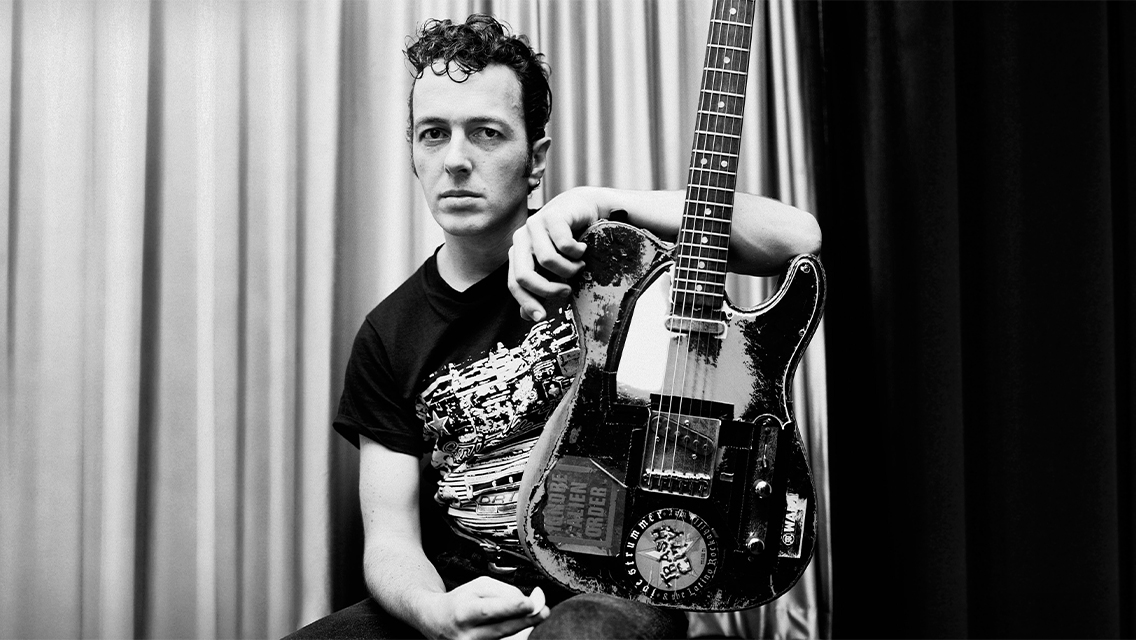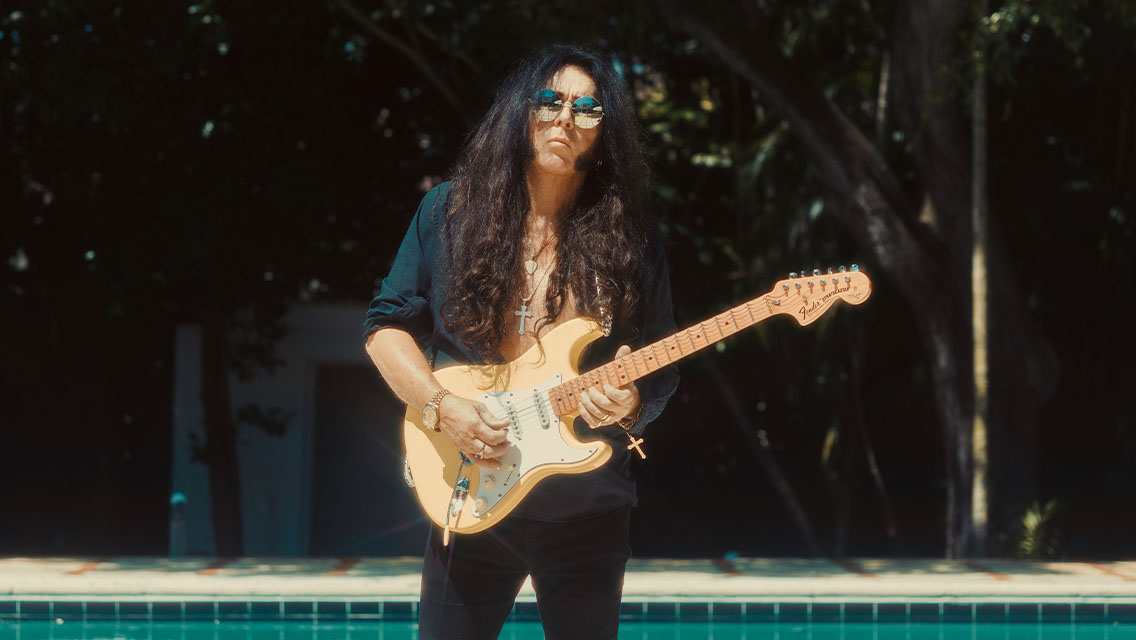
Fender 12-string electric guitars? Doesn’t ring a bell. Has there ever been such a thing? Have I ever heard one?
Yes, there has (a few, in fact). And yes, you very likely have.
Fender chimed in during the mid 1960s with a most distinctive electric 12-string guitar model, the aptly named Electric XII. It was around from 1965 to 1969, and if you’ve ever heard quintessential Led Zeppelin epic “Stairway to Heaven", you’ve heard this guitar.
Also during the 1960s, Fender made its first foray into thin hollow-body electric guitar design with the Coronado family, which included the Coronado XII 12-string guitar of 1967-1970.
In Fender’s modern era, there have been several 12-string Stratocaster models, beginning with the Special/Deluxe Series Strat XII of 1988-97. Also included here are the Classic Series Stratocaster XII 12-String of 2003-04 and the more enduring Special Edition Series Stratocaster XII 12-string of 2005-10. The Fender Custom Shop also briefly got in on the act with a specialized 12-string Telecaster model in the latter 1990s.
Of all these guitars, the Electric XII (pictured below) saw the most use. Although Fender arrived a little late to the 12-string-electric party in the 1960s—well after Rickenbacker established domination of the niche with its Beatles/Byrds affiliation—it was serious about getting in on the folk-rock action then topping the charts. Toward that end, Leo Fender himself set about designing an entirely new guitar rather than merely sticking six more strings on an established model (which is basically what several other popular guitar makers did) like the Telecaster or the Stratocaster.
The Electric XII was a smartly designed, well-built and entirely new instrument. It was introduced in June 1965, four months after CBS ownership of Fender took effect and just as the Byrds’ jangly “Mr. Tambourine Man” single and album were topping the charts and ushering in the folk-rock boom (Gene Clark played a Firemist Gold prototype model when the CBS-signed Byrds played the song on the May 11, 1965, episode of NBC’s Hullabaloo; only the group’s second televised performance and, ironically, one of the very few times Clark was seen holding a guitar instead of a tambourine).

The Electric XII had a comfortable offset body like its cousins, the Jazzmaster, Jaguar, Mustang, Jazz Bass and Bass VI. It had two split single-coil pickups, which was most unusual for a Fender guitar, although a split single-coil pickup had been a standard feature of distant cousin the Precision Bass since 1957. Its four-way rotary pickup selector switch was another unusual element; it offered each pickup by itself, both pickups together and both pickups together but out of phase with each other. A single volume knob and single tone knob were mounted on a Jazz Bass-like chrome plate. The 21-fret rosewood fingerboard had pearl-dot inlays.
Where the Electric XII truly exceeded other electric 12-string models, however, was its bridge. Most electric 12-string guitars used six-saddle bridges accommodating two strings apiece, which could be problematic for pinpoint intonation. The Electric XII, on the other hand, boasted a fully adjustable 12-saddle bridge that allowed precise intonation for each string, with a string-through-body design that offered increased sustain. Simple but stylish and efficient, the bridge was in fact one of Leo Fender’s last designs before his company was sold to CBS in 1965.
The Electric XII debuted in a standard three-color sunburst nitrocellulose lacquer finish with a white pearloid pickguard (quickly replaced by tortoiseshell) and black amp-style control knobs. Custom-color finishes were also offered in early model years. Late-1965 models had white neck binding, and block inlays replaced dots in mid 1966. A black Fender headstock decal appeared in 1968, as did “F”-style tuners and thicker polyester finishes.
Perhaps the most striking visual element of the Electric XII, however, was its enormous “hockey stick” headstock, which also appeared on Fender’s Shenandoah and Villager acoustic 12-string models in summer 1965. Bulky and decidedly not sleek, the hockey-stick headstock seemed at odds with the smooth lines of the rest of the instrument, and it was a major departure from the six-on-a-side tuner layout that had been a hallmark of Fender electric guitars from the very beginning in the early 1950s.
As solid an instrument as the Electric XII was, onstage visibility proved elusive. Although it found widespread studio use, the guitar “never really caught on as a live instrument,” as noted in The Golden Age of Fender: 1946-1970. The 12-string electric guitar trend had dwindled considerably 1967, and the Electric XII was discontinued in 1969, with leftover bodies and parts used to fashion the esoteric and even more short-lived Fender Custom/Maverick model of 1969-71.
That’s not to say, however, that the Electric XII hasn’t found its way into some very noteworthy hands, from the beginning right up to today.
Jimmy Page used his 1965 model on at least two Led Zeppelin songs. Most famously, he used his Electric XII in December 1970 to record the beautifully arpeggiated rhythm guitar parts in “Stairway to Heaven". Also at that time, he used it to achieve the massive, mesmerizing guitar drone of “When the Levee Breaks".
Further, Page has used the guitar both before and since his Zeppelin work. He used it in May 1966 to record the Jeff Beck solo single “Beck’s Bolero", and it made its live debut on April 4, 2009, when Page joined Beck and his band onstage at Beck’s Rock and Roll Hall of Fame induction for “Beck’s Bolero” and “Immigrant Song".
Pete Townshend also put the instrument to good use. When the Who mimed along to “Magic Bus” on an Oct. 7, 1968, appearance on German TV’s Beat-Club, Townshend wielded his 1965 Fender Electric XII. More importantly, he too put it to great use in the studio—when the Who recorded Tommy in early 1969, Townshend used it on “Sparks” and “Underture". He has apparently owned more than one Electric XII and was photographed with one as recently as 2006.
Eric Clapton played an Electric XII on “Dance the Night Away", an uncharacteristically jangly track from 1967 Cream album Disraeli Gears (in a 2006 episode of Classic Albums that documents the making of the album, Clapton uses his Electric XII to demonstrate various chord voicings in the song).
Bob Dylan was photographed at the 1965 sessions for Highway 61 Revisited cradling an Electric XII, although it’s unclear if he recorded anything with it.
Other Electric XII players of that original era include John Pisano of Herb Alpert and the Tijuana Brass, who used his quite a lot (1967’s “Wade in the Water” being a fine example), singer/songwriter Tim Buckley (1973 tracks “Dolphins” and “Honey Man", and many others), Beach Boy Carl Wilson (who was photographed with a 1965 prototype model), “Wrecking Crew” guitarist Billy Strange (who played one on 1966 Beach Boys classic “Sloop John B”), and the Velvet Underground’s Lou Reed and Sterling Morrison, who played theirs on “Beginning To See the Light” and “What Goes On” from the band’s eponymous 1969 third album. Johnny Winter played an Electric XII strung as a six-string at the 1969 Woodstock festival.
In the modern era, Electric XII players include Tom Petty, who played a white one the first half of his 2006 North American tour; Chad Taylor of Live, who often played his blue one onstage and on platinum 1999 album The Distance to Here; and Verve guitarist Nick McCabe, who used a red Fender Electric XII borrowed from vocalist Richard Ashcroft during the band’s 2008 comeback tour, notably on “Space and Time” from 1997 album Urban Hymns.
Finally, if you watch very closely, you’ll see the red hockey stick headstock of an Electric XII in the beloved “guitar collection” scene in 1984 rock mockumentary This Is Spinal Tap. You can catch a brief glimpse of it as Nigel Tufnel (Christopher Guest) shows filmmaker Marty DiBergi (Rob Reiner) his special Marshall amp head—the one with the numbers that “all go to 11.”
Fender’s other electric 12-string guitar of the 1960s was the Coronado XII. The Coronado line of thinline hollow-body electrics appeared in 1966 and was made in Fender’s acoustic guitar facility on Missile Way in Anaheim, Calif. Designed to go head to head with Gibson’s 300 series guitars, the Coronados were thin double-cutaway models with f holes, floating bridge/tailpiece assemblies and DeArmond pickups, although they kept distinctive Fender elements such as bolt-on necks and six-on-a-side headstocks.

Except for the Coronado XII, that is. It was introduced in 1967 and, like the Electric XII before it, featured the large “hockey stick” headstock. Further, the guitar was also made available in the distinctive Wildwood and Antigua finishes, as the Coronado XII Wildwood and Antigua XII, respectively.
As interesting and elegant as the Coronado XII was, the electric 12-string trend in popular music was largely over by then, and so the timing of its arrival might seem curious. Fender promotional materials of the late 1960s show Coronado XII models being played by acts such as the Fifth Dimension and Chad & Jeremy, but it seemed as though few others did, and the Coronado XII was gone by the end of 1970.

Fender’s modern era saw the arrival of a 12-string Stratocaster. Made in Japan and introduced in 1988, the Strat XII had most customary Stratocaster features and design elements, with the additions of a special 12-saddle bridge and a large headstock with a brand-new shape to accommodate six tuners on each side.
Surprisingly durable for such a specialized instrument, the 22-fret Strat XII remained in the lineup for nearly a decade; it was discontinued in 1997. It was resurrected a few years later as the 21-fret Classic Series Stratocaster XII 12-String (2003-04), which then moved to the Special Edition Series until being discontinued in 2010.
The Fender Custom Shop even offered a 12-string Telecaster model in the 1990s. The limited edition Telecaster XII of 1995-99 featured a two-piece lightweight ash body in several finishes, a single-ply black pickguard and a maple neck and fingerboard.
As of 2013 then, the Fender guitar lineup is once again without a 12-string electric model—though there are acoustic 12-string models available—but you never know what the future holds. Fender is fond of periodically delving into its colorful history and paying affectionate homage to some of its more esoteric instruments.
Don’t miss out!
Be the first to know about new products, featured content, exclusive offers and giveaways.


